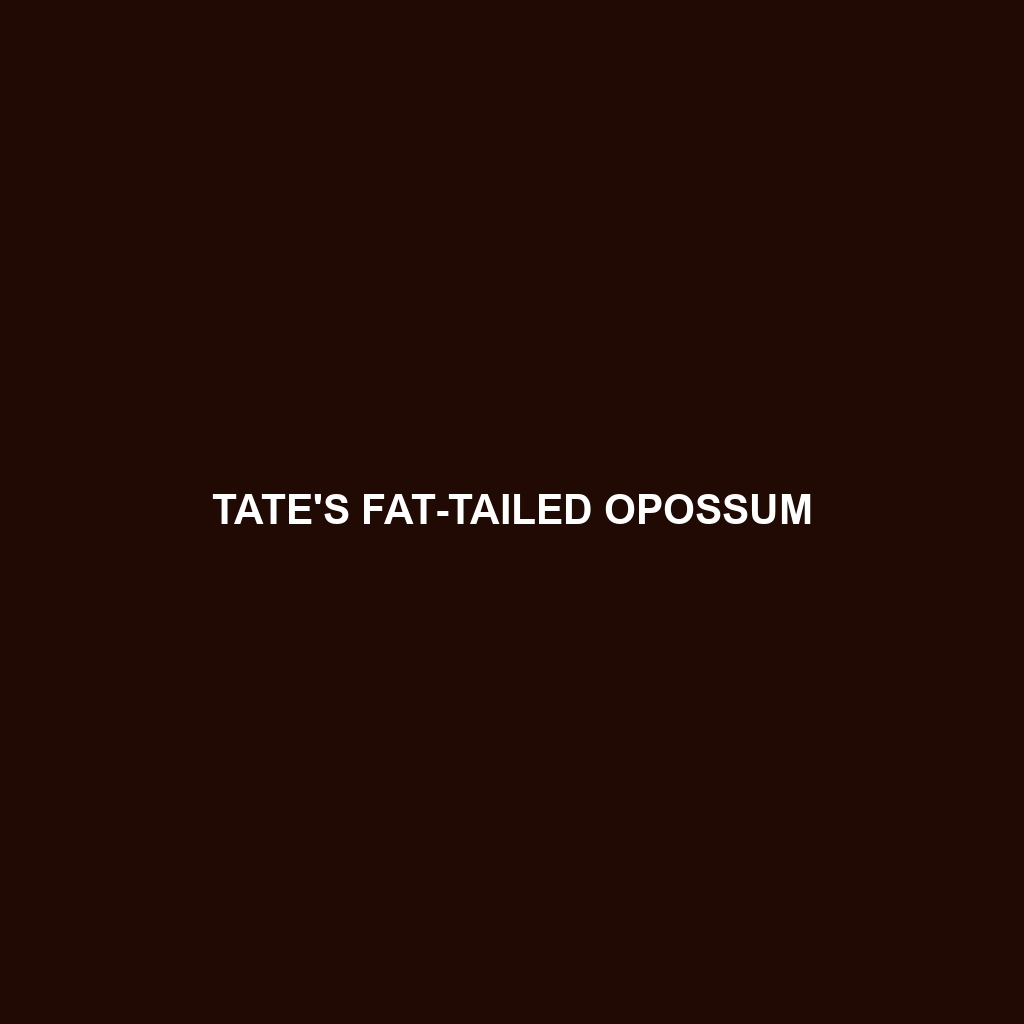Tate’s Fat-tailed Opossum: A Detailed Description
Tate’s Fat-tailed Opossum (Thylamys tatei) is a small, nocturnal marsupial native to South America. Known for its distinctive appearance and unique adaptations, this opossum has garnered interest for its survival strategies and ecological roles. Named in honor of the mammalogist George Henry Hamilton Tate, this species plays a crucial role in the ecosystems it inhabits.
Physical Characteristics
Size: Adult Tate’s Fat-tailed Opossums typically measure between 9 to 15 cm (3.5 to 5.9 inches) in body length, with a tail length of 7 to 12 cm (2.7 to 4.7 inches).
Coloration: Their fur is generally a soft grey to brown on the dorsal side, while the ventral side is lighter, often white or cream-colored. The face may have a slightly darker mask-like pattern around the eyes.
Special Features: The most striking feature is their tail, which is fat and thick at the base, serving as a fat storage organ. This adaptation helps them survive during periods when food is scarce.
Behaviors
Social Interactions: Tate’s Fat-tailed Opossums are generally solitary animals, coming together only during the breeding season. They are known for their secretive and elusive nature.
Feeding Habits: These opossums are omnivorous, with a diet that includes insects, small vertebrates, fruits, and nectar. Their opportunistic feeding habits allow them to adapt to various food sources depending on availability.
Ecological Roles: They play a significant role in controlling insect populations and act as seed dispersers, thereby aiding in the maintenance of their habitats.
Habitats
Natural Habitat: Tate’s Fat-tailed Opossums are found in a variety of habitats ranging from dry forests and scrublands to subtropical and tropical regions. They prefer areas with ample ground cover and are often found near water sources.
Geographical Range: They are primarily located in parts of Bolivia, Paraguay, and northern Argentina.
Adaptations
Fat Storage: The fat-storing capability of their tails is a key adaptation that allows them to endure periods of food scarcity, thereby ensuring their survival in fluctuating environmental conditions.
Nocturnal Lifestyle: Being nocturnal helps them avoid many predators and the heat of the day, making them more efficient hunters and foragers at night.
Climbing Skills: Their prehensile tails and sharp claws make them adept climbers, allowing them to escape predators and access food sources in trees and shrubs.
Conservation Status
IUCN Status: As of the latest evaluations, Tate’s Fat-tailed Opossum is listed as “Least Concern” by the International Union for Conservation of Nature (IUCN). However, habitat destruction and fragmentation remain potential threats.
Conservation Efforts: Conservation efforts focus on habitat preservation and mitigating the impacts of agricultural expansion and deforestation.
Fascinating Fun Facts
Tail Regeneration: While the tails of these opossums do not regenerate if lost, their ability to store fat in their tails is a remarkable adaptation among marsupials.
Reproductive Strategy: Unlike many other marsupials, female Tate’s Fat-tailed Opossums do not have a fully developed pouch. Instead, they have a fold of skin that covers the developing young, which cling to the mother’s nipples for sustenance.
Vital Role in Ecosystems: Their role as seed dispersers and insect predators highlights their importance in maintaining ecological balance in their habitats.
Tate’s Fat-tailed Opossum is a fascinating example of nature’s adaptability and resilience. Its unique features and behaviors make it an intriguing subject for study and conservation efforts. By understanding and protecting this small marsupial, we contribute to the overall health of the ecosystems it inhabits.
